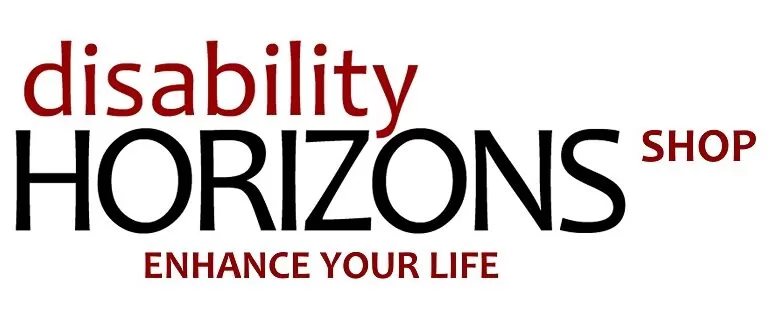When Fred Perry launched its adaptive polo shirt—priced identically to the original—it raised eyebrows in both the fashion world and the disability community. It’s a rare move in an industry where accessibility often comes with a premium. In this piece, Duncan Edwards—shop manager at Disability Horizons Shop, product designer, and entrepreneur—shares his perspective on why this decision matters. Drawing on lived experience and years of manufacturing insight, Duncan explores the realities of the “disability tax,” and why Fred Perry’s pricing strategy is more than fair—it’s a model for genuine inclusion in mainstream retail.
| Key Takeaways |
| Fred Perry has launched an adaptive version of their iconic polo shirt with magnetic fastenings. |
| The adaptive shirt costs the same as the standard one — no “disability tax.” |
| Manufacturing adaptive products often comes with higher costs, but Fred Perry chose to absorb them. |
| This sets a powerful example of how inclusive design can be priced fairly without sacrificing quality. |
| The blog offers insight from both a manufacturing and disability advocacy perspective. |

Fred Perry recently launched an adaptive version of its iconic polo shirt — and it deserves the attention it’s getting. It’s a smart move: the company has taken its most recognisable shirt, swapped the buttons for discreet magnetic closures, and made it a permanent part of the collection — at the exact same price as the original.
The Adaptive Fred Perry Shirt
So what exactly has Fred Perry created? The Adaptive Fred Perry Shirt is based on the M3600 — the classic twin-tipped piece that’s been a wardrobe staple for decades. In terms of fit, fabrication, and detailing, every stitch remains consistent with the original.
The clever bit is in the placket. Two concealed magnetic fastenings replace the traditional buttons, allowing the shirt to be easily opened and closed. But here’s the design detail that shows the company really thought this through: two non-functional buttons sit on top to maintain that signature Fred Perry look. From the outside, it’s indistinguishable from the classic version.
At £75 RRP, it sits at exactly the same price point as the standard M3600, and it’s available permanently in the UK from May 2025 — not as a limited edition or special collection, but as part of the core range. It comes in two classic colorways: Black/White/White and White/Black/Black.
It’s a textbook example of inclusive design done well. But here’s what makes it remarkable: Fred Perry chose to price it identically to its standard shirt. That decision brings up a conversation I have all the time — in design meetings, at trade shows, and over coffee with friends. That thorny question of the so-called “disability tax.”
The Disability Tax
People often talk about the “disability tax” — not always in response to product launches, but as a day-to-day reality. It’s the unspoken surcharge on everything from wheelchairs and adapted cars to specialist shoes, tech, or cutlery. Products that serve a basic function for non-disabled people somehow cost much, much more when labelled as “accessible.”
As someone who straddles both worlds — I run a product business, and I’m part of the disabled community — I’m going to say something uncomfortable:
The price isn’t always the problem. Sometimes it’s fair — like Fred Perry’s shirt. But one fairly-priced item doesn’t cancel out the bigger picture: the cost of disability is constant, everywhere else.
So when a brand releases an adaptive product, the question is inevitable: Will this cost more too? And when it doesn’t — like with Fred Perry’s shirt — it feels like a welcome exception.
From the Factory Floor: Why Adaptive Products Cost More
Let’s be practical. Making accessible versions of products costs more. Not because brands are trying to fleece disabled people — but because the numbers stack up differently.
- Components: Magnetic fasteners are significantly more expensive than plastic buttons. And integrating them into a classic design — as Fred Perry did — requires additional tooling and pattern tweaks.

- Scale: Most adaptive clothing isn’t produced in the kind of high volumes that drive costs down.
- Development: Getting it right takes time. Inclusive design means working with consultants, testing with real users, and iterating. That process costs money, and rightly so. Fred Perry consulted with Zebedee Talent and disability strategist Shani Dhanda to make sure this wasn’t just a cosmetic fix.
So when a brand prices an adaptive product higher, it’s usually just covering these increased costs, not profiteering. In fact, it’s almost certain that Fred Perry is making less profit per adaptive shirt than on its standard range. That’s the business reality.
Big Brand vs. The Little Guy
This raises an important question: can every brand make this same choice?
I run a shop that champions disabled entrepreneurs and small businesses. For them, creating an adaptive product isn’t a side project; it’s their entire business. They don’t have a massive, profitable “standard range” to subsidise the adaptive one. They have to price their products to survive.
It’s fantastic that a giant like Fred Perry can do this. But let’s not forget the small, independent makers in the disability space. They don’t have the luxury of scale. When you buy from them, you’re not just buying a product; you’re funding the entire ecosystem of disability-led innovation.
The Hidden Costs: The Real Impact
But just because a brand’s maths checks out doesn’t mean disabled people aren’t paying a price. This is where we see the brutal reality of the “disability tax.” It’s not a single line item, but a systemic financial pincer movement.
On one side, costs are relentlessly higher. It’s the obvious things, like a specialised wheelchair cushion, a screen reader, or grab rails. But it’s also the hidden surcharges of daily life: the higher energy bills from charging essential equipment, the accessible taxis because uber doesn’t have WAVs available, or the self funded equipment you buy because you cannot wait a day longer for the NHS.
The Income Squeeze
On the other side, income is squeezed. Being limited to part-time work is a common reality, but even that only scratches the surface. The real issue is inaccessible workplaces, the energy-draining commute that makes a full-time week impossible, or the need for rest/sick days that employers simply don’t understand.
When you put it together—higher costs clashing with lower earning potential—it becomes a constant, draining pressure. It’s not just a tax on products; it’s a tax on existence. Which brings us back to Fred Perry’s decision—and why it matters so much.
This Isn’t Charity, It’s Smart Business
This is where we see what real corporate allyship looks like.
Fred Perry will have faced higher costs to make its adaptive shirt. The company could easily have added £10 or £15 to the price and called it a fair markup. It didn’t.
The brand absorbed it. Fred Perry took the hit on its profit margin for that product line because it decided that inclusion was more important than maximising profit on every single item.
That’s not charity. That’s a commercial decision rooted in respect and genuine commitment to inclusivity.
It shows that inclusion doesn’t always mean inventing something new. Sometimes it means taking what already works — and opening it up to more people, without penalty. Fred Perry is using its scale and resources to remove a barrier, not add one.
This shifts the conversation from “Why does this cost more?” to “Why can’t more big brands choose to absorb the cost?” It sets a new benchmark — showing that cost parity in adaptive design is possible, if brands are willing.
Beyond being the right thing to do, this is also a masterclass in smart business. By choosing to invest in its community rather than passing on costs, Fred Perry earns immense goodwill and brand loyalty. The brand is showing it sees disabled people not as a niche afterthought, but as valued customers who are central to the brand. It sends a clear message: inclusion isn’t a cost to be minimised, but an opportunity to lead.
Always Different, Always The Same
The development process involved working with accessibility consultants from concept to execution, with Shani Dhanda providing guidance throughout. As she puts it:
Fred Perry has always been a symbol of individuality and unity, and by adapting this iconic piece, they’re proving that style should never be a barrier. The Adaptive Fred Perry Shirt is setting a new benchmark for what accessible fashion can and should look like.
Fred Perry has adapted the design without altering the identity. Same fit, same details, same Laurel Wreath — just easier to wear. Or, to borrow Fred Perry’s own words: always different, always the same. That’s not just a slogan. It’s a quiet manifesto for what inclusive fashion can be. It’s the same shirt, just adapted. And that might be the most important part of all.
So, bravo Fred Perry. You’ve thrown down the gauntlet and shifted the conversation entirely. The blueprint is there. Nike, M&S, Zara—who’s next?
About the Author
Duncan Edwards is the shop manager at Disability Horizons Shop and founder of a growing range of inclusive lifestyle products. As a entrepreneur and experienced manufacturer, he’s passionate about accessible design that’s both functional and stylish. Duncan’s products include the Trabasack range and the Don’t Take Me Home Keyfob, all his designs are created in collaboration with disabled people. He currently has two new adaptive products in development, due to launch later this year. Watch this space!

